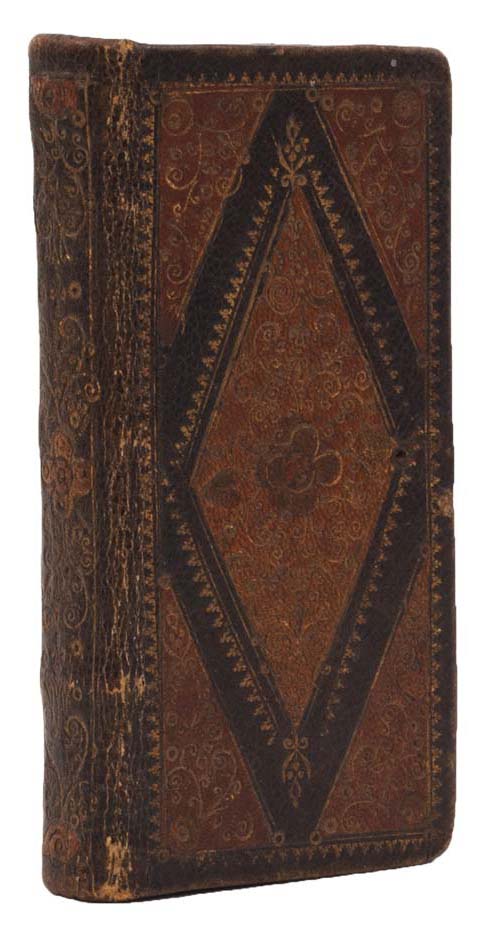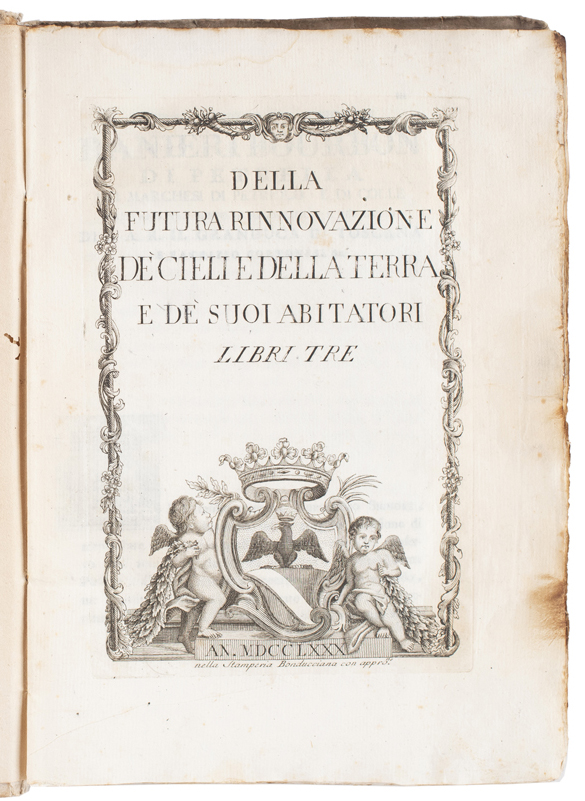

BARBARO, Francesco.
De re uxoria libri duo, ut venustate sermonis praeclari, ita & praeceptis optimis & exemplis uberrimis ex omni Graeca Latinaque historia collectis redundantes ...
Amsterdam, Jan Jansson, 1639.
12mo, pp. 178, [8], [6 (blank)]; woodcut device to title, initials; a few small marks to title and elsewhere; very good in early eighteenth-century Dutch polished calf, spine gilt in compartments with gilt stained lettering panel, gilt board-edges, edges stained; short split to upper joint at head, headcap chipped, a little rubbed at extremities; arms of Auguste-Léon de Bullion, marquis de Bonnelles (1691–1769) blocked in gilt to each board.

Added to your basket:
De re uxoria libri duo, ut venustate sermonis praeclari, ita & praeceptis optimis & exemplis uberrimis ex omni Graeca Latinaque historia collectis redundantes ...
An attractive later edition of this famous treatise on marriage by the eminent Venetian humanist and politician Francesco Barbaro (1390–1454).
The young Barbaro composed the De re uxoria in 1415 to celebrate the marriage of Lorenzo de’ Medici the Elder and Ginevra Cavalcanti, drawing upon Greek and Latin sources. First published in Paris by Josse Badius in 1513, the work is still studied on its own merits, and as a window onto fifteenth-century Italian attitudes towards marriage and family life.
Divided into two books, the De re uxoria covers, for example, the benefits of marriage, dowries, the bride’s age, nobility, and wealth, a wife’s duties, conjugal affection, a wife’s clothing and diet, sex, domestic affairs, and bringing up children.

